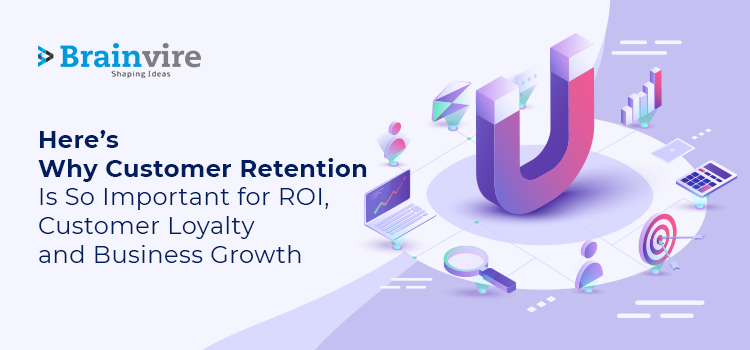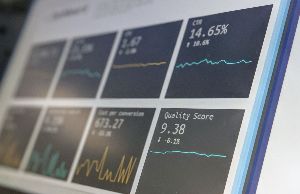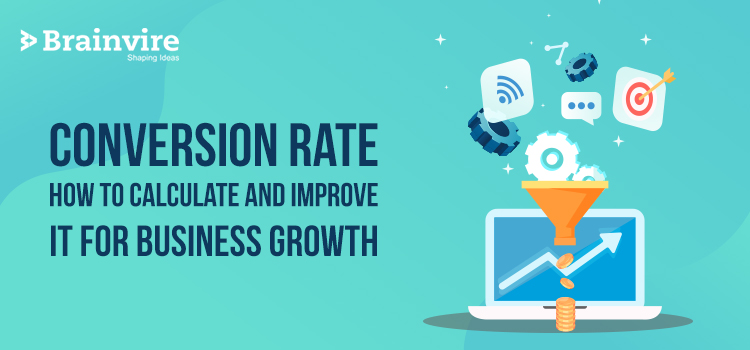
Customer retention is the process of retaining or reserving the customers for a period as desired by businesses. It is one of the most critical aspects of business growth and development. Customer retention helps in increasing the revenue and lifetime value of customers. Measuring customer retention rate helps the business assess different aspects of the operational process and make new policies and plans to achieve the business goals and increase the business revenue through retaining customers.
Many analysts and researchers have developed several methods of calculating customer retention rates, which can help businesses to quantify a strong bond and relation with the customers.
Few Statistics on Customer Retention
Statistics show that it’s more comfortable and affordable to retain customers instead of acquiring them. Research says that the probability of selling a product to the existing customer is 60-70 percent, and the probability of selling to new customers is only 5-20 percent.
Also, acquiring new customers is 5x times costlier than retaining a new customer. There are many other telling stats that suggest that keeping existing customers is one of the most critical aspects of every business. Every business person should develop and try out customer retention strategies to attain a stable situation in this competitive business ecosystem.
Ten Customer Retention Metrics
Many customer retention metrics help the business know its growth rate and the rate of customer retention and discover new retention strategies to improve companies’ goodwill in the eyes of customers. Let us see some of them.
1. Recurring Purchase Rate
The recurring purchase rate (RPR) is also known as the Repeat purchase ratio. It is one of the essential metrics that help businesses see the percentage of customers who have purchased the product from their company again. This metric helps test customer loyalty and is often used by the sales and marketing team to assess the retention strategy’s impact and performance.
Recurring purchase rate can be measured in many time frames – daily, weekly, monthly, or quarterly. It can be calculated by dividing the number of returned customers by the total number of customers.
RPR = Number of returned customers / Total Number of Customers
2. Customer Shelf-life Value
Customer shelf-life helps in measuring the total revenue from a single buyer. This metric allows businesses to measure the consistency of customers. So, the business Customer shelf-life must rise or at least stay consistent to make sure that the company or business is stable or rising.
To measure the customer lifetime value, firstly it is important to know the average total revenue from all the customers within a year. This can be calculated as follows:
Average total revenue = Gross annual sales/total number of customers in a year
After calculating the average total revenue per customer, there is a need to multiply the average revenue per customer by the average lifespan of the buyers to find out the Customer shelf-life value.
Customer shelf-life value = Average revenue per customer / Average lifespan
3. Customer Retention Rate
This metric helps the company find out the percentage of customers who stayed with the company. This metric can indicate whether the business is growing or not and whether the retention strategy is effective or not.
This rate can be calculated as follows:
CRR= Number of Customers (end of the month) – Number of customers (attained in the month) / Number of customers (beginning of the month)
4. Churn Rate
The churn rate is the rate at which the buyer does not remain as the existing customer. There are chances that he/she may have moved to the next company or haven’t renewed your SEO services. If the company has a high churn rate, it means that the customers are not happy with the products and services.
The churn rate is be calculated with the help of the following formula:
ACR = Number of customers (beginning of the year) – Number of Customers (end of the year) / Number of customers (start of the year)
5. Revenue Churn Rate
This rate helps to find out the percentage of total revenue lost within a period from the existing buyers. If the revenue churn rate is unstable, it means that the customer is on the brink of leaving your services, and you need to take action rapidly to retain the customers.
This rate can be calculated as follows:
Monthly Revenue rate = Monthly recurring revenue (month starting) – Monthly recurring revenue (month ending) – MRR (upgrades during the month)/MRR (month starting)
6. Customer Acquisition Cost
Customer Acquisition Cost is the total cost spent to attain or attract new customers. A customer acquisition company can provide strategies and tools to reduce CAC by targeting the right audience and optimizing conversion processes.Higher CAC means the business is going down as needs to take action to bring down the CAC and grow the customers. The CAC can be measured as follows:
Customer Acquisition rate = total cost to acquire customers / Total Number of customers acquired.
7. Net promoter score
The net promoter score helps the marketing and sales team to measure customer loyalty and satisfaction towards your brand. The business must retain high NPS to ensure the growth and development. The NPS can be measured with the help of the following formula:
NPS = Percentage of promoters – Percentage of Detractors
8. Profitability Per Order
The profitability per order metric can help the company to identify the amount of profit earned on each purchase. Higher PPO means higher profits, so the company must always try to enhance the PPO to grow faster and bigger. The PPO can be measured by:
PPO = Total Revenue x Average profit / Number of orders (per year)
9. Redemption Rate
The redemption rate is the Percentage of total loyalty rewards redeemed by the existing customers. A high redemption rate means that the customers find your loyalty rewards valuable and are satisfied with your loyalty program.
Redemption rate = Number of points redeemed / Number of points issued
10. Day’s Sales Outstanding
The day’s sales outstanding is the average number of days in which the receivables remain pending. A healthier DSO reading means that the customer is interested in your products & services, and is trying to build a connection to continue doing business Also, it impacts the cash flow of your business. It gives you an idea about the clearance of a bill receivable.
The day’s sales outstanding can be measured as follows:
Annual Days Sales Outstanding = (Total Receivable / Annual Revenue) × total Number of days (per year)
Conclusion
Retention strategy is becoming more popular as businesses have started focusing more on retaining the customers instead of acquiring new ones. All the above-mentioned metrics can help the business find loopholes in its working and also to find many growth opportunities to establish and scale up smoothly and rapidly.
So, every business owner must apply these metrics to their companies policies and strategies.
Related Articles
-
Generate Online Leads That Will Boost Your Business
Many successful businesses, whether small or big, continuously want to expand their customers and grow their businesses. Although, business growth is a long-term and challenging process. And one of the
-
Conversion Rate: How to Calculate and Improve It for Business Growth
Conversion rate. Do you ever wonder what this term means or what is its significance in SEO marketing? Well, you are not the only one who thinks so. When I
-
Here’s Why Customer Retention Is So Important for ROI, Customer Loyalty, and Business Growth
For all possible reasons that is out there, we all know how tough it is to acquire new customers year after year, and especially in these uncertain times of COVID-19.



